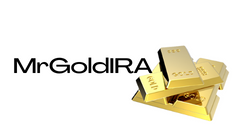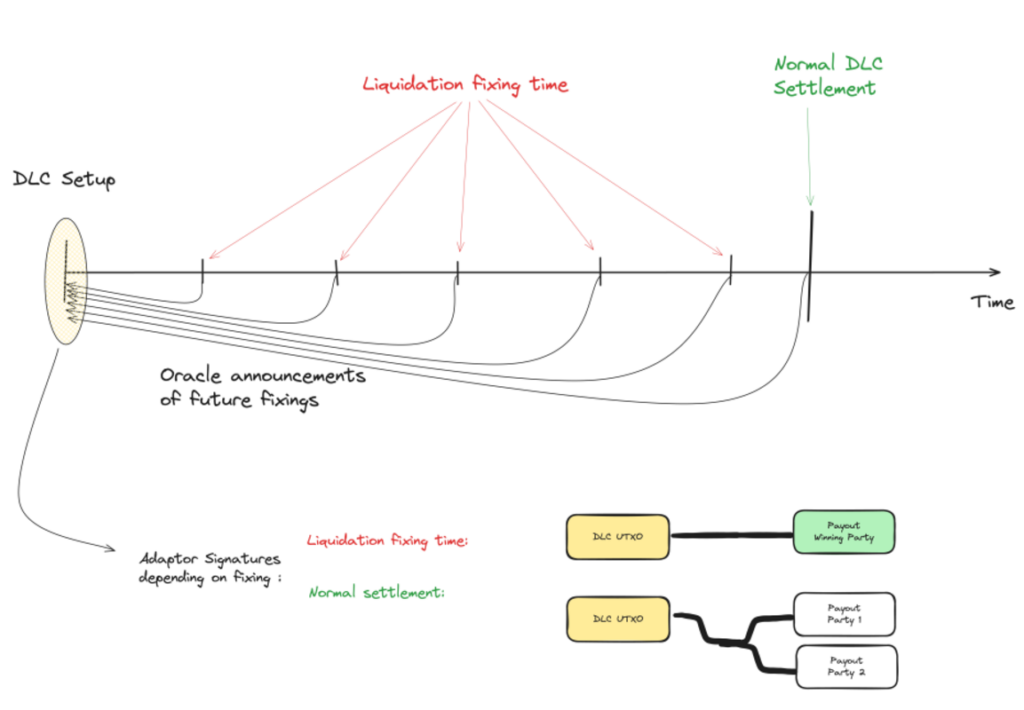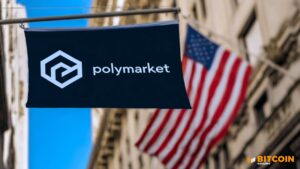
Introduction
Discreet Log Contracts (DLCs) have been around for a while, first proposed by Thaddeus Dryja in 2017. DLCs are a type of smart contract designed to address several issues with previous contract schemes. The goal was to improve scalability, enable the inclusion of external data into the blockchain, and enhance user privacy. In this article, we will explore the basics of DLCs and discuss how they are evolving to meet the needs of institutional actors.
The Basics of DLCs
DLCs are relatively simple in structure. Two parties create a multisig address and choose an oracle. The oracle is responsible for announcing the price of a specific asset, such as Bitcoin. The participants then create a set of Contract Execution Transactions (CETs) that interact with the oracle. Each CET contains an encrypted signature from one participant to the other, which can only be decrypted using information from the signed oracle message. The oracle publishes commitments to these messages, allowing participants to make DLCs based on the information provided. If the oracle fails to broadcast the necessary information to settle the DLC, both parties are refunded their money after a specific timelock period. DLCs effectively address the scalability, data inclusion, and privacy issues mentioned earlier.
DLC Markets
While DLCs have been primarily tailored towards retail consumers, there is a growing need to modify the design to meet the requirements of institutional customers. LN Markets, for example, recently introduced a new DLC specification specifically designed for institutional actors. This specification aims to address three key issues faced by institutional customers: the free options problem, the lack of margin calls, and the need for efficient capital utilization.
Introducing the DLC Coordinator
LN Markets' solution to these issues is the introduction of a DLC coordinator. Instead of direct coordination between peers in a contract, the coordinator facilitates the process. This eliminates the free options problem by ensuring that neither participant has access to the signatures needed to fund the contract. Only the coordinator possesses both signatures, and they are incentivized to submit the funding transaction after the DLC has been negotiated and signed. The coordinator also simplifies the coordination process, allowing users to register an xpub and UTXOs with the coordinator. This streamlines the setup of DLCs and reduces the need for extensive communication between participants.
Liquidations and Additional Margin
The DLC coordinator also plays a crucial role in facilitating liquidations and handling additional margin. Special settlement transactions are included in DLCs for periods before the contract expiry. If the price of the asset falls outside the contract range at any of these liquidation points, either party can submit a transaction to settle the contract earlier. If one party is approaching a liquidation point, they can use the coordinator to coordinate adding margin to the contract. This allows the other party to withdraw some of their gains while ensuring the contract remains adequately collateralized.
Advantages for Institutional Investors
The modifications made to DLCs to cater to institutional actors offer several advantages. Institutional investors can now manage liquidity more effectively, have contracts expire early in case of under-collateralization, and add more collateral in response to upcoming liquidation events. These changes bring DLCs more in line with the expectations of institutional investors and expand their potential use cases beyond retail consumers.
Conclusion
The evolution of DLCs to meet the needs of institutional actors is an exciting development in the world of smart contracts. By addressing key issues and introducing a DLC coordinator, DLCs become more scalable, efficient, and suitable for institutional use. As the demand for smart contract solutions continues to grow, DLCs are set to play an increasingly important role in the digital landscape.
Frequently Asked Questions
How much of your IRA should include precious metals?
It's important to understand that precious metals aren't only for wealthy people. It doesn't matter how rich you are to invest in precious metals. In fact, there are many ways to make money from gold and silver investments without spending much money.
You could also consider buying physical coins like bullion bars, rounds or bullion bars. It is possible to also purchase shares in companies that make precious metals. You might also want to use an IRA rollover program offered through your retirement plan provider.
Regardless of your choice, you'll still benefit from owning precious metals. They are not stocks but offer long-term growth.
Their prices rise with time, which is a different to traditional investments. If you decide to make a sale of your investment in the future, you will likely realize more profit than with traditional investments.
What is a Precious Metal IRA?
You can diversify your retirement savings by investing in precious metal IRAs. This allows you to invest in gold, silver and platinum as well as iridium, osmium and other rare metals. These are “precious metals” because they are hard to find, and therefore very valuable. They are great investments for your money, and they can protect you from inflation or economic instability.
Bullion is often used to refer to precious metals. Bullion refers to the actual physical metal itself.
Bullion can be purchased through many channels including online retailers and large coin dealers as well as some grocery stores.
With a precious metal IRA, you invest in bullion directly rather than purchasing shares of stock. You'll get dividends each year.
Precious Metal IRAs don’t require paperwork nor have annual fees. Instead, you pay a small percentage tax on the gains. Plus, you get free access to your funds whenever you want.
What is the best precious-metal to invest?
This question is dependent on the amount of risk you are willing and able to accept as well as the type of return you desire. Although gold has traditionally been considered a safe investment choice, it may not be the most profitable. Gold may not be right for you if you want quick profits. Silver is a better investment if you have patience and the time to do it.
If you don’t desire to become rich quickly, gold may be your best option. If you are looking for a long-term investment that will provide steady returns, silver may be a better choice.
Should You Buy Gold?
Gold was a safe investment option for those who were in financial turmoil. Many people today are moving away from stocks and bonds to look at precious metals, such as gold, as a way to diversify their investments.
The gold price has been in an upward trend for the past few years, but it remains relatively low compared with other commodities like silver or oil.
This could be changing, according to some experts. They believe gold prices could increase dramatically if there is another global financial crises.
They also pointed out that gold is gaining popularity due to its perceived value, and potential return.
Here are some things to consider if you're considering investing in gold.
- Before you start saving money for retirement, think about whether you really need it. You can save for retirement and not invest your savings in gold. However, you can still save for retirement without putting your savings into gold.
- You should also be aware of what you are getting into before you buy gold. There are many types of gold IRA accounts. Each type offers varying levels and levels of security.
- Keep in mind that gold may not be as secure as a bank deposit. It is possible to lose your gold coins.
Do your research before you buy gold. If you already have gold, make sure you protect it.
How much should precious metals be included in your portfolio?
To answer this question, we must first understand what precious metals are. Precious metals have elements with an extremely high worth relative to other commodity. This makes them highly valuable for both investment and trading. Today, gold is the most commonly traded precious metal.
There are however many other types, including silver, and platinum. While gold's price fluctuates during economic turmoil, it tends to remain relatively stable. It is also unaffected significantly by inflation and Deflation.
In general, all precious metals have a tendency to go up with the market. However, they may not always move in synchrony with each other. For instance, gold's price will rise when the economy is weak, while precious metals prices will fall. This is because investors expect lower rates of interest, which makes bonds less attractive investments.
However, when an economy is strong, the reverse effect occurs. Investors prefer safe assets such as Treasury Bonds and demand fewer precious metals. Because they are rare, they become more pricey and lose value.
To maximize your profits when investing in precious metals, diversify across different precious metals. Furthermore, because the price of precious Metals fluctuates, it is best not to focus on just one type of precious Metals.
How do I open a Precious Metal IRA
It is important to decide if you would like an Individual Retirement Account (IRA). Open the account by filling out Form 8606. Next, fill out Form 5204. This will determine the type of IRA that you are eligible for. This form must be submitted within 60 days of the account opening. Once this has been completed, you can begin investing. You can also choose to pay your salary directly by making a payroll deduction.
If you opt for a Roth IRA, you must complete Form 8903. Otherwise, the process is identical to an ordinary IRA.
To be eligible for a precious metals IRA, you will need to meet certain requirements. The IRS says you must be 18 years old and have earned income. You cannot earn more than $110,000 annually ($220,000 if married filing jointly) in any one tax year. Contributions must be made on a regular basis. These rules apply regardless of whether you are contributing directly to your paychecks or through your employer.
A precious metals IRA can be used to invest in palladium or platinum, gold, silver, palladium or rhodium. However, you won't be able purchase physical bullion. This means you can't trade shares of stock and bonds.
To invest directly in precious metals companies, you can also use precious metals IRA. This option is offered by some IRA providers.
An IRA is a great way to invest in precious metals. However, there are two important drawbacks. First, they are not as liquid or as easy to sell as stocks and bonds. It's also more difficult to sell them when they are needed. Second, they are not able to generate dividends as stocks and bonds. Therefore, you will lose money over time and not gain it.
What is the benefit of a gold IRA?
Many benefits come with a gold IRA. It's an investment vehicle that lets you diversify your portfolio. You can control how much money is deposited into each account as well as when it's withdrawn.
You can also rollover funds from other retirement accounts to a gold IRA. This makes for an easy transition if you decide to retire early.
The best part about gold IRAs? You don't have to be an expert. They're readily available at almost all banks and brokerage firms. You do not need to worry about fees and penalties when you withdraw money.
There are, however, some drawbacks. Gold is historically volatile. Understanding why you want to invest in gold is essential. Do you want safety or growth? Is it for security or long-term planning? Only when you are clear about the facts will you be able take an informed decision.
You might want to buy more gold if you intend to keep your gold IRA for a long time. One ounce doesn't suffice to cover all your needs. Depending on the purpose of your gold, you might need more than one ounce.
You don’t necessarily need a lot if you’re looking to sell your gold. Even one ounce is enough. These funds won't allow you to purchase anything else.
Statistics
- (Basically, if your GDP grows by 2%, you need miners to dig 2% more gold out of the ground every year to keep prices steady.) (smartasset.com)
- This is a 15% margin that has shown no stable direction of growth but fluctuates seemingly at random. (smartasset.com)
- You can only purchase gold bars at least 99.5% purity. (forbes.com)
- Indeed, several financial advisers interviewed for this article suggest you invest 5 to 15 percent of your portfolio in gold, just in case. (aarp.org)
- If you accidentally make an improper transaction, the IRS will disallow it and count it as a withdrawal, so you would owe income tax on the item's value and, if you are younger than 59 ½, an additional 10% early withdrawal penalty. (forbes.com)
External Links
cftc.gov
investopedia.com
- Do You Need a Gold IRA to Get Retirement?
- What are the Options Types, Spreads. Example. And Risk Metrics
forbes.com
- Gold IRA: Add some sparkle to your retirement nest egg
- Understanding China's Evergrande Crisis – Forbes Advisor
irs.gov
How To
Tips for Investing with Gold
One of the most sought-after investment strategies is investing in gold. There are many benefits to investing in gold. There are many options for investing in gold. There are many ways to invest in gold. Some prefer buying physical gold coins while others prefer gold ETFs (Exchange Traded Funds).
Before you purchase any type or gold, here are some things to think about.
- First, find out if your country allows gold ownership. If so, then you can proceed. You can also look at buying gold abroad.
- The second thing you need to do is decide what type of gold coins you want. You can choose between yellow gold and white gold as well as rose gold.
- You should also consider the price of gold. Start small and move up. It is important to diversify your portfolio whenever you purchase gold. Diversifying your portfolio includes stocks, bonds, mutual funds, real estate, commodities, and mutual funds.
- Remember that gold prices are subject to change regularly. It is important to stay up-to-date with the latest trends.
—————————————————————————————————————————————————————————————-
By: Shinobi
Title: Evolving DLCs to Meet Institutional Needs
Sourced From: bitcoinmagazine.com/technical/dlcs-evolving-to-meet-institutional-needs
Published Date: Wed, 14 Feb 2024 19:01:37 GMT















